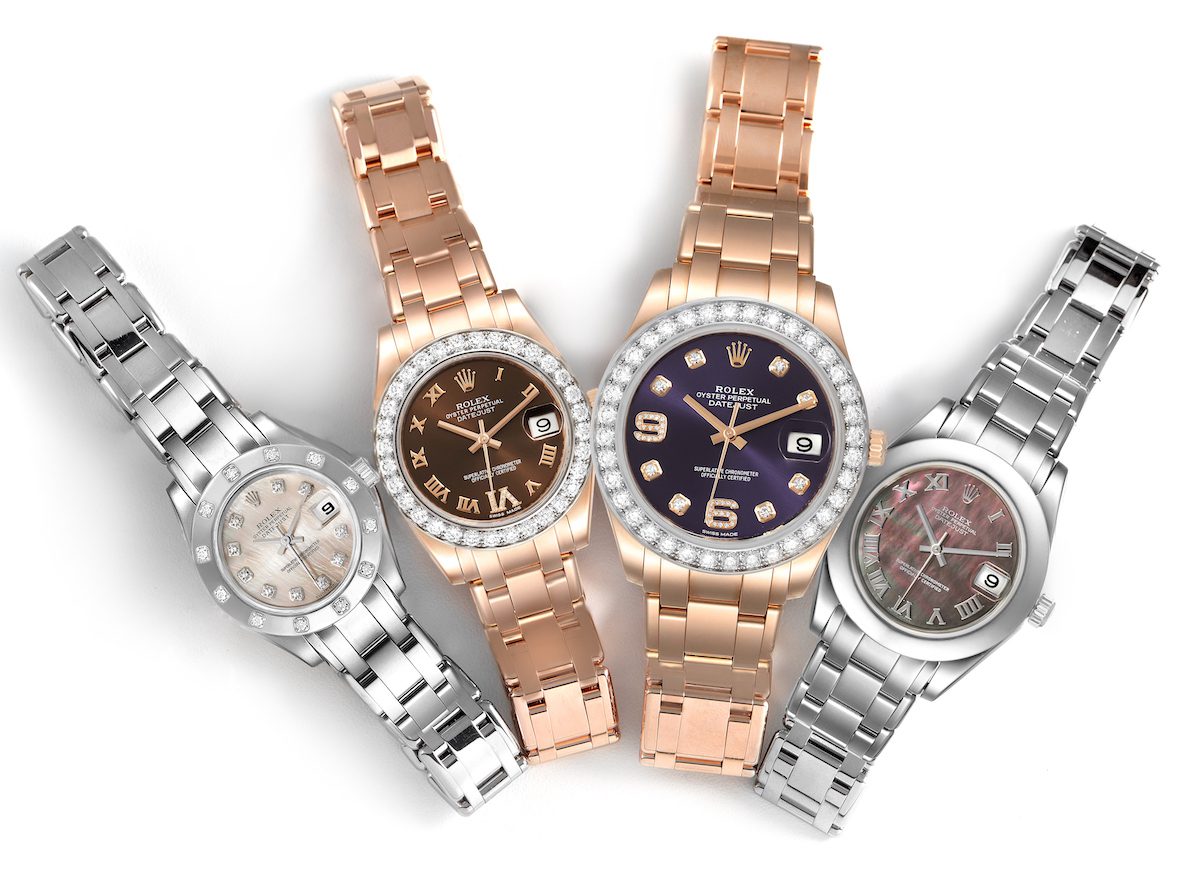Rolex, a name that resonates with luxury, precision, and elegance, has become synonymous with the finest timepieces in the world. From its inception in 1905, the brand has consistently pushed the boundaries of watchmaking, creating iconic designs that have stood the test of time. This article explores the rich history of Rolex, highlights its most iconic timepieces, and delves into the brand’s enduring jewelry legacy, showcasing why Rolex remains a symbol of status and excellence.
A Glimpse into the History of Rolex
The Founding and Early Innovations
Rolex was founded in 1905 by Hans Wilsdorf and his brother-in-law Alfred Davis in London, England. Originally named “Wilsdorf & Davis,” the company initially focused on distributing timepieces rather than manufacturing them. In 1908, Wilsdorf registered the trademark “Rolex” and moved the company’s headquarters to Geneva, Switzerland, a city renowned for its watchmaking expertise.
One of the early innovations that set Rolex apart was the introduction of the first waterproof wristwatch, the Oyster, in 1926. This groundbreaking design featured a hermetically sealed case, protecting the movement from dust and moisture. To prove the Oyster’s durability, Rolex arranged for Mercedes Gleitze to wear the watch during her successful swim across the English Channel in 1927. The watch emerged unscathed, cementing Rolex’s reputation for reliability.

The Perpetual Movement and Precision
In 1931, Rolex introduced the world’s first self-winding mechanism, the Perpetual rotor. This innovation revolutionized the watch industry by eliminating the need to manually wind the watch. The Perpetual movement, combined with Rolex’s commitment to precision and accuracy, led to the creation of chronometers that met the highest standards of the Swiss Official Chronometer Testing Institute (COSC).
Iconic Rolex Timepieces: A Legacy of Excellence
Rolex Submariner
The Rolex Submariner, introduced in 1953, is arguably one of the most iconic diving watches ever made. Known for its robust design, unidirectional rotating bezel, and exceptional water resistance, the Submariner has become a favorite among divers and watch enthusiasts alike. The model’s sleek aesthetics and functionality have made it a staple in the Rolex lineup, with notable wearers including James Bond in several films.
Rolex Daytona
Named after the famous Daytona International Speedway, the Rolex Daytona was launched in 1963 as a high-performance chronograph designed for racing drivers. The watch’s tachymetric scale and stopwatch functions make it ideal for measuring speed and lap times. Over the years, the Daytona has gained legendary status, partly due to its association with actor and racing enthusiast Paul Newman, whose personal Daytona fetched a record-breaking price at auction.

Rolex Datejust
The Rolex Datejust, introduced in 1945, was the first wristwatch to feature an automatically changing date window on the dial. This innovative design set a new standard for watches, making the Datejust a timeless classic. With its distinctive Cyclops lens magnifying the date display, the Datejust remains one of Rolex’s most popular models, known for its elegance and versatility.
Rolex Day-Date
The Rolex Day-Date, also known as the “President,” debuted in 1956 and was the first wristwatch to display both the date and the day of the week in full. This model quickly became a symbol of success and prestige, often worn by world leaders and influential figures. The Day-Date’s luxurious design, featuring a gold or platinum case and bracelet, embodies the pinnacle of Rolex craftsmanship.

The Jewelry Legacy of Rolex
Beyond its reputation for precision timekeeping, Rolex has also made significant contributions to the world of jewelry. The brand’s meticulous attention to detail and use of the finest materials have led to the creation of exquisite timepieces that double as stunning jewelry pieces.
Use of Precious Metals and Gemstones
Rolex is renowned for its use of high-quality materials, including 18k gold, platinum, and stainless steel. The brand also incorporates precious gemstones, such as diamonds, sapphires, and rubies, into its designs. The meticulous setting of these stones requires expert craftsmanship, ensuring that each piece is not only visually stunning but also durable.
The Rolex Pearlmaster Collection
The Rolex Pearlmaster collection epitomizes the brand’s mastery of jewelry watchmaking. Introduced in 1992, the Pearlmaster features a curvaceous, elegant design and is often adorned with diamonds and other gemstones. Available in 18k yellow, white, or Everose gold, the Pearlmaster combines the precision of Rolex timepieces with the opulence of fine jewelry.

The Art of Gem-Setting
Rolex’s gem-setting process is an art form in itself, requiring a high level of expertise. The brand employs skilled gemologists who select only the finest gemstones, which are then meticulously set by hand. The process involves precisely positioning each stone to ensure symmetry and brilliance, resulting in a harmonious and dazzling finish.
Rolex: A Symbol of Status and Achievement
Rolex timepieces are more than just watches; they are symbols of achievement, status, and excellence. The brand’s association with high-profile events, sports, and personalities has further cemented its place in popular culture. From sponsoring prestigious events like Wimbledon and the Daytona 500 to being the choice of explorers, athletes, and celebrities, Rolex has become a global icon.
The legacy of Rolex is built on a foundation of innovation, precision, and unparalleled craftsmanship. From its pioneering waterproof designs to its sophisticated jewelry watches, Rolex continues to set the standard in the world of luxury timepieces. Whether admired for their technical prowess or cherished as heirlooms, Rolex watches are timeless treasures that embody the pinnacle of watchmaking and jewelry artistry. As the brand continues to innovate and inspire, its iconic timepieces and jewelry legacy will undoubtedly endure for generations to come.
